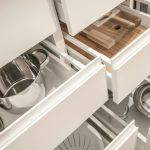Coming face-to-face with the challenge of redesigning a historic pub can be a daunting prospect. Balancing the need to preserve the site’s character and historical elements with the requirement to update its facilities to modern standards is not an easy task. However, with a well-thought-out design plan and a careful approach, you can transform a dated establishment into a facility that continues to carry the charm of yesteryears while catering to the needs of today’s users. This article delves into how you should approach the process.
Understanding the Historic Site
Before embarking on redesigning an historic pub, it’s vital to understand the building in its entirety. This includes its history, its architectural significance, and the sentiments attached to it by regular users and the community at large.
Topic to read : How can a restaurant effectively use scent marketing to enhance dining experiences?
Start by conducting extensive research. Visit local libraries, contact the local historic society, and engage with longstanding patrons. Unearth old photographs, blueprints, and records that could reveal the original design of the pub.
Next, consider consulting with a historic preservation specialist. They can provide valuable insights into the architectural significance of the building, identify vital elements worth preserving, and guide you through the local, state, and national historic preservation standards.
Have you seen this : What are the most effective ways to train staff on multicultural etiquette in an international hotel restaurant?
Remember, the goal isn’t merely to update the facility, but to do so in a way that retains the pub’s historic character. Every effort should be made to protect and restore original elements that contribute to the pub’s historic integrity.
Integrating Modern Facilities
Modernizing a historic pub should be done in a manner that doesn’t detract from its historic character. The challenge lies in incorporating modern facilities without disturbing the existing architectural fabric.
For example, if the pub lacks sufficient restroom facilities, consider areas where an extension can be added without affecting the existing structure. You might also need to update the kitchen to meet current health and safety standards, which would involve identifying a layout that allows for efficient service while minimizing changes to the building structure.
Additionally, you should consider accessibility improvements. Modern facilities need to be inclusive and cater to a wider audience. Incorporating ramps, handrails, and accessible restrooms can make your pub more welcoming to all. Remember though, these additions should blend seamlessly with the pub’s design, not stand out as an obvious modern addition.
Balancing Aesthetics and Practicalities
The task of blending the old and new is as much an aesthetic challenge as it is a practical one. How you approach this can significantly affect the character of your historic pub.
When selecting new fixtures and furnishings, consider the design of the original time period. Although these won’t be historic, they can still evoke the right feel. Light fixtures, bar stools, tables, and even the bar itself can all be chosen with a nod to the past.
Meanwhile, modern demands like Wi-Fi, USB charging points, and efficient heating and cooling systems need to be integrated subtly. Care should be taken to hide unsightly wires and equipment.
Utilizing Technology and Digital Platforms
In the digital age, technology can play a crucial role in the success of a pub. Besides, having a strong online presence is as important as the physical facility.
Having a well-designed website that reflects the character of your historic pub can attract potential customers. The website design should mirror the aesthetics of your pub, providing visitors with a digital experience that matches the physical one.
Additionally, social media channels can be utilized to engage with the community and share stories and pictures of the pub’s history and ongoing transformation.
Working with Professionals
Embarking on a redesign project for a historic pub is not something to be taken lightly. It requires a deep understanding of historic preservation, construction techniques, interior design, customer service, and even marketing.
Therefore, working with professionals who have experience in this field can be highly beneficial. Architects, interior designers, construction companies, and digital marketing agencies each bring their unique skills to the project.
In conclusion, redesigning a historic pub requires a balance of understanding the past, accommodating the present, and looking towards the future. It’s about preserving the character and charm of the establishment while ensuring it serves the needs and expectations of today’s customers.
Harnessing Best Practices for Accessibility
Making a historic pub accessible is a crucial aspect of modernizing it. However, this must be done with care to ensure that the character and charm of the pub are not compromised. This is where employing best practices for accessibility becomes critical.
In order to create an accessible route, you need to consider the path of travel from the parking area or street to the pub’s entrance. This path should be smooth, level, and free of obstacles, with a clear floor and ground space to accommodate wheelchairs.
If the pub has stairs leading to the entrance, it might be necessary to construct a ramp. However, ramps must be designed to blend with the pub’s existing architecture. A structurally impracticable ramp that is visually out of sync with the rest of the building can detract from its historic character.
Inside the pub, an accessible entrance to the restroom, bar area, and other primary functions should be provided. As for the restrooms, they must be adapted to meet the needs of individuals with disabilities. This could include installing handrails, creating a wider door for wheelchair access, and designing a clear floor space inside.
It’s also crucial to bear in mind that the redesign isn’t just about physical accessibility. It’s also about creating a visual hierarchy that aids navigation. Consider using contrasting colors, clear signs, and good lighting to help customers navigate the space easily.
Close attention should be paid to the details. For example, the height of the bar counter should be lowered to accommodate customers in wheelchairs, and the furniture should be arranged to allow for easy movement.
Remember, while making your historic pub accessible, you have the chance to demonstrate that inclusivity and historic preservation can go hand in hand.
Leveraging Local Government and Health Care Regulations
Local government regulations play a crucial role in the redesign of a historic pub. It is essential to align your redesign plans with these regulations to avoid future complications.
Building facilities must meet the health and safety standards set by local government bodies. This might require upgrading the kitchen and restrooms to meet health codes, installing proper fire safety measures, and ensuring adequate ventilation.
When planning these updates, remember the goal is to maintain the character of the pub. For instance, while upgrading the kitchen to meet current health codes, aim for a design that seamlessly integrates with the rest of the pub.
Adapting the pub to meet health care regulations is also crucial, particularly in the context of a global pandemic. This might include providing sanitizing stations, ensuring proper social distancing can be maintained, and possibly implementing a well-ventilated, designated smoking area.
It’s important to approach these changes not as obstacles but as opportunities to enhance the appeal of your pub to modern customers while preserving its historical charm.
Conclusion: Balancing History and Modernity
The challenge of redesigning a historic pub is not merely about altering an old building. It’s about striking a perfect balance between preserving its historical character and making it relevant and appealing to contemporary customers.
Understanding the site’s history and architectural significance forms the foundation of a successful redesign. Integrating modern facilities with the least possible disruption to the existing structure then becomes paramount. This involves a careful blend of aesthetics and practicalities, keeping in mind best practices for accessibility, customer service, and local regulations.
Technology and digital platforms offer additional avenues to enhance the customer experience and engage with the community. It’s about creating a cohesive experience, one that marries the traditional charm of the pub with the convenience and inclusivity of modern facilities.
Working with professionals can ensure that you navigate this challenging process successfully, steering clear of potential pitfalls and adhering to historic preservation standards.
Redesigning a historic pub, then, is a journey that requires passion, patience, and expertise. Done right, it allows us to step into the past, while firmly setting foot in the present, ensuring the survival and relevance of these cherished establishments for generations to come.






